

Top Page > Product info > Characteristics > Setting details
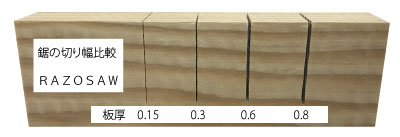
We tried making the thinnest saw blade, 0.15mm. The cutting edge is 0.25mm thick, so it's great for crafts that requires intricate work. They are more for professionals, but please try using one.

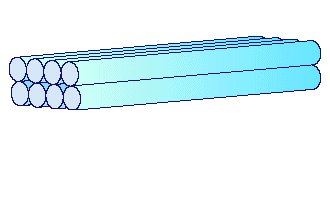
Crosscut teeth are made up of two rows of teeth just like in the diagram above. The edges are very sharp like a cutter knife. Crosscut teeth cut the wood fiber. You can also make cuts diagonally with crosscut teeth. You will not be able to make nice and clean cut along the grain with crosscut teeth because they only cut fibers into smaller pieces.

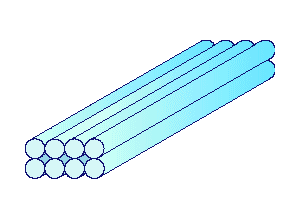
Rip teeth also have teeth lined up in two rows. How it's different from crosscut teeth is that the tip of the tooth is flat and it works like a chisel. They cut by carving the surface of timber. Since they carve timber, there would be more saw dust. The space in between each tooth is bigger than crosscut teeth to prevent saw dust from building up. We don't recommend using rip teeth for cross cutting timbers. You will not be able to make smooth cuts.

We apply the same technique when making edges on rip teeth as when we make edges on crosscut teeth. By doing so our rip teeth can cut plastic that has no fibers. You can make both rip cuts and crosscuts on timber with it. However, it only works on blades with 0.5mm thick or thinner. If the blade is thicker than that, crosscuts does not work well. That's the reason why we say our Usuba saws are rip cut saws.

The teeth pitch becomes bigger as it gets towards the tip of the blade. It's harder to put pressure as it gets away from the handle. By making the size of each tooth bigger, uniform pressure is applied on each tooth. Such characteristics are common on saws with double edges. We apply the same characteristics on crosscut teeth of gardening saws that requires high cutting quality.

The teeth pitch becomes bigger as it gets towards the tip of the blade. It's harder to put pressure as it gets away from the handle. By making the size of each tooth bigger, uniform pressure is applied on each tooth. Such characteristics are common on saws with double edges.
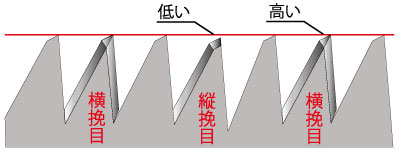
We put a rip teeth in between some crosscut teeth. Rip teeth digs away saw dust as it cuts the material. The height of rip teeth is shorter than that of crosscut teeth. Rip teeth don't actually cut the material. Woodworking saws with such characteristics can be used to make rip cuts. By putting rip teeth on green wood saws, sentei saws, and fruit saws, it helps to cut branch collars as well.

Cutting quality is greatly improved by making some variations on the height of the teeth edges. If the height of all the teeth is the same, it cannot cut the material. We make the variations based on different types of saw. Hand saws work by carving the material. For the best cutting quality, saw dust must be removed from the cutting surface. Teeth with lower height does not cut the material but they just take away saw dust.
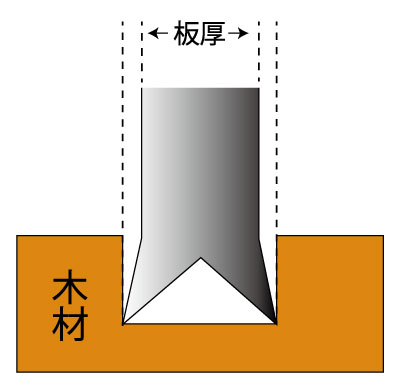
Sets are teeth that are slightly bent left and right. This is so that the blade does not get stuck in the material. If the set is too big, the blade does not stabilize, but if it's too small, the blade gets stuck and it's hard to cut the material. We set teeth differently on blades with different thickness. Set teeth makes cutting width bigger than the blade thickness.
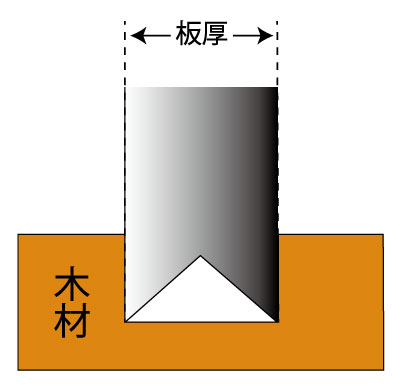
Sentei saws have no sets. Instead Sentei saws have taper blade, which works just like sets. Saws with bigger set can make clean cutting surface.
*Our flush cutting saw single edge and double edges have no setting to prevent leaving scratch marks on the material.

The tip at the teeth edges is thickest, and the blade becomes thinner towards the back of the blade. You can make clean cuts even with bigger teeth pitch. It's ideal for felling in the forest by professionals. With clean cuts, you will not damage the tree.

With a curved tip, you can make holes on a flat surface. It would be useful for carpentry work.

These blades are wider than our regular items. Dozuki saws have long back metal, and it gets in the way as you cut the material. By making the blade wider, you can cut materials up to about 6cm thick.

The blade width is thinner than our regular saws. Double edged saws with thinner blade width are easier to handle plus they cut materials better.

Teeth of Komame saws are smaller than our other types of blade. Double edged Komame saws are not only for woodworking but can be also used for craft work that requires intricate work. You can use our folding saws with fine teeth for pruning bamboos.
Edges on bamboo saws are very sharp for cutting strong bamboo fibers. Since bamboos are hollow inside, it's hard to start cutting,
but it becomes easier to cut once the blade is in the hollow part. It again becomes harder to cut in the end, and that frequently tears the bamboo skin.
With our bamboo saw, you can make clean cuts without tearing the skin.
We recommend our bamboo saws with a sheath for outdoor use,
and we recommend bamboo saws with a straight handle if you'd like to use them for both pruning and for bamboo crafts. If you'd like to use it only for bamboo crafts,
we recommend Dozuki extra fine saws and Dozuki saws.

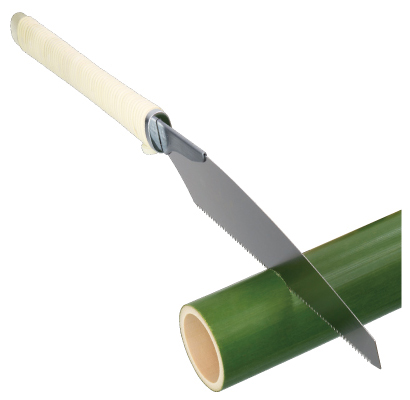
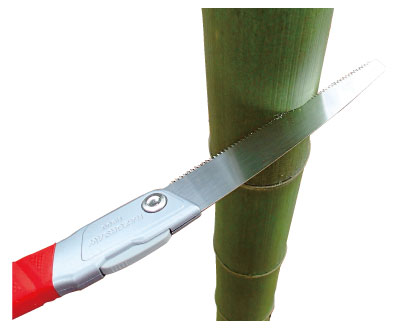
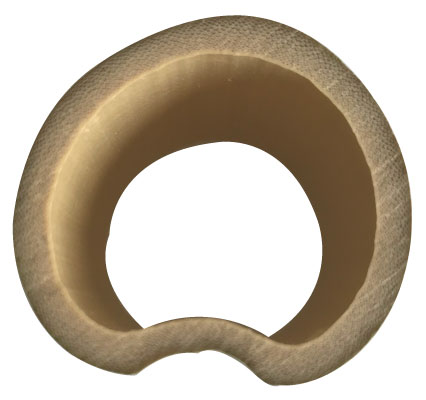
Our plastic saws have special teeth for cutting plastic. They prevent making burr.
Plastic doesn't contain fibers,
so our plastic saws have mainly rip teeth with some characteristics of crosscut teeth.
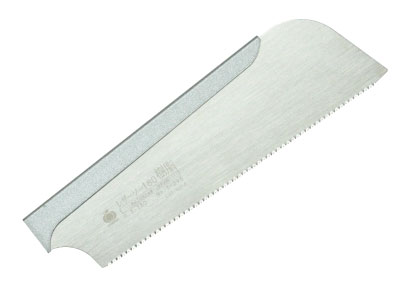
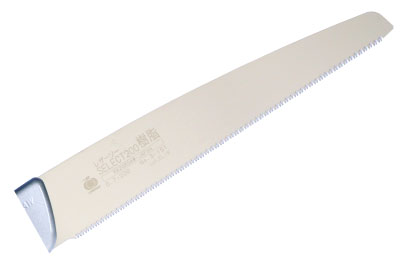
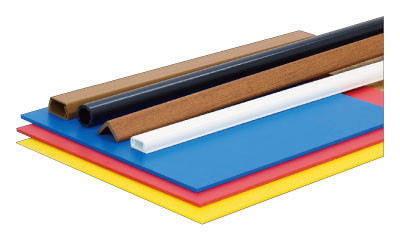
They have special teeth for cutting PVC pipes. They also minimize burr.
Our bamboo saws and PVC pipe saws look similar, but the structure is different.
Bamboo saws have crosscut teeth and PVC pipe saws have rip teeth.
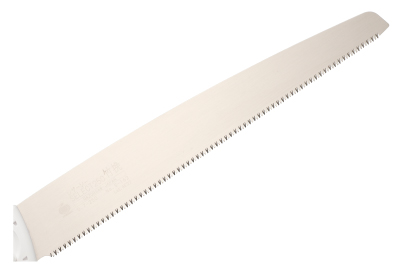
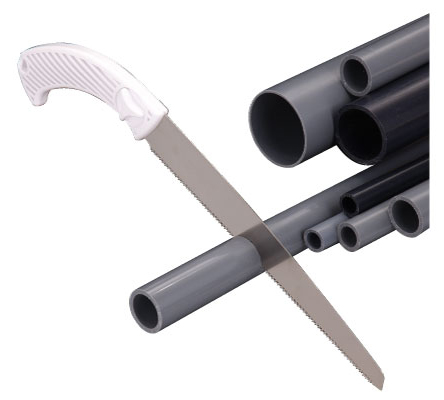
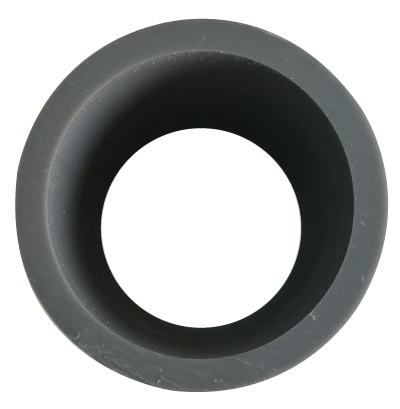
They are mini saw with rip teeth. Unlike woodworking saws, surface of teeth is hardened by induction hardening. The core is not hardened.

They are designed to cut plastic bottles and cardboards. They are also good for cutting roots in the soil.

Drilling is possible with the tip blade. You can cut through the drilled hole.
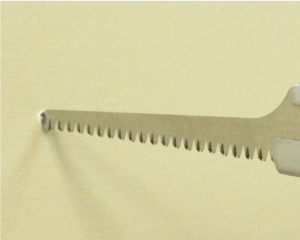


copyright (c) RAZORSAW MANUFACTURING CO., LTD. All right reserved.